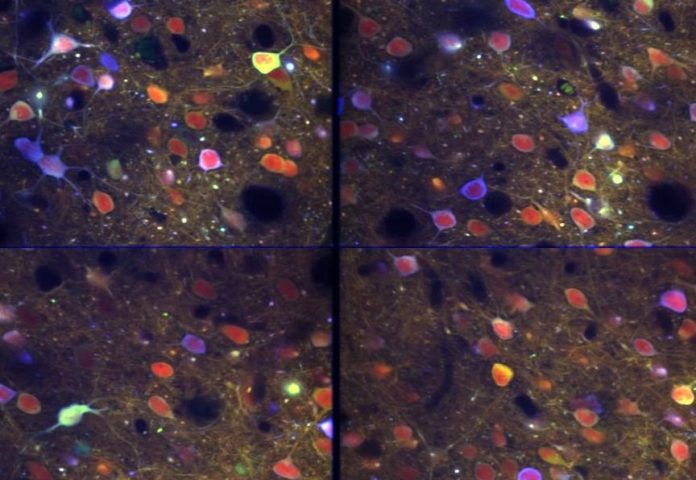Neuroscience investigates what happens in the brain during learning processes. But even with simple experiments, mountains of data arise that need a lot of expertise in data management in order to be evaluated and compared using the most modern methods. Research groups of the Collaborative Research Center 1089 “Synaptic Micronetworks in Health and Disease” at the University of Bonn have now entered into a cooperation with DataJoint, a data solutions company in Houston (USA). The researchers expect new insights from the combined expertise of neuroscience and data science.
The example of “classic conditioning” is known from the biology textbook: An air puff in the eye causes an animal to blink. If a sound tone is played at the same time, these two stimuli become linked: after several repetitions, the tone alone is enough to evoke a blink. “It’s a very simple form of learning,” says Prof. Dr. Tobias Rose from the Institute for Experimental Epileptology and Cognitive Sciences at the University Hospital Bonn. What happens in the brain during this learning process is still largely unknown.
“As simple as the experiment appears, the interplay of the brain regions involved is just as complex,” says Prof. Dr. Tatiana Tchumachenko from the Institute for Experimental Epileptology and Cognitive Science. The expert for computer-aided neuroscience and behavior would like to investigate together with Prof. Rose what changes occur in the areas of the brain during classical conditioning.
The teams specialize in areas of the brain
The project is part of the Collaborative Research Center 1089 “Synaptic Micronetworks in Health and Disease”, which is also one of the members of the transdisciplinary research area “Life & Health” at the University of Bonn. A total of five teams from the University of Bonn and the German Center for Neurodegenerative Diseases (DZNE) each specialize in different areas of the brain and work together on the project.
“The big challenge is that the experiments in the various teams have to be carried out in a standardized manner so that the data can be compared and reproduced later,” says Rose. The researchers are studying what happens in the brains of mice, which are monitored by cameras. The draft is administered through a small tube towards the rodents’ eyes. At varying time-intervals, a small lamp lights up or a sound signal is played which leads to the formation of an associative memory.
Active nerve cells light up
A multiphoton microscope records what happens in the brain of the mice. “This means that the activity of hundreds or thousands of nerve cells can be recorded at the same time,” says Tchumachenko. The brain cells are coupled with a fluorescent dye that lights up when the cells activate. The research team uses this data to reconstruct the interactions between the nerve cells and regions involved in the brain.
The scientists rely on external help for this. The researchers therefore have entered a cooperation agreement with DataJoint, a research company in Houston (USA). Founded by neuroscientists and data scientists, the company creates uniform processes for data collection and processing in order to achieve results that are comparable and reproducible.
“This is a growing challenge in brain research where our company excels,” says DataJoint CEO Dr. Dimitri Yatsenko. “With support from the National Institutes of Health, we are working with leading research teams to standardize and automate data collection, analysis and visualization in neuroscience experiments.” Through the collaboration with the University of Bonn research team, DataJoint will develop and disseminate new solutions for combined analysis of behavior and neurophysiology signals to support investigations of how the nervous system processes information and gives rise to behaviors.
“The brain is an extremely complex organ,” says the spokesman for the Collaborative Research Center, Prof. Dr. Heinz Beck. Researchers are joining forces to decipher the fundamental processes of nerve cell interactions using uniform approaches. “The leading strategy in neuroscience is to evaluate rich data sets using the latest machine learning methods and to compare the results across data sets.”








